Table of Contents
The history of kimono, traditional Japanese clothing
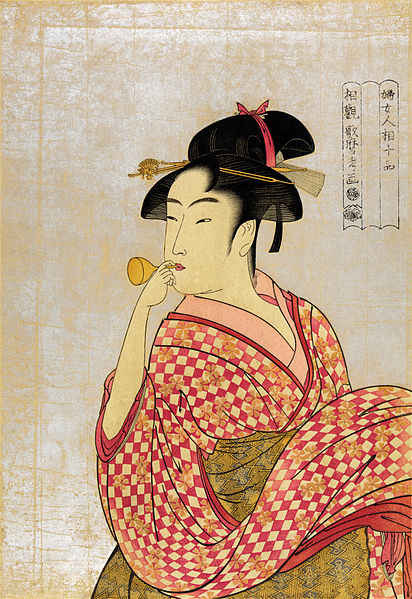
Most of the today’s Japanese people live in Western style clothing. But traditional Japanese clothing (kimono) is treated as a dress at an important event including a wedding ceremony, and young people who wear yukata in summer increase recently.
The prototype of the current kimono can be found in Heian Period of about 1200 years ago. Then people have used various fabrics, patterns, and colors for the clothing. Kimono used advanced technology and materials became an area of Japanese art.
Let’s go back to the ancient times before the establishment of the kimono and look at the history of Japanese clothing.
If you want to learn the types and patterns of kimono
Jomon Period,Yayoi Period and Tumulus Period
By the time of Jomon Period (? – 3rd century BC?) when hunting living, and Yayoi Period (3rd century BC- 3rd century BC) when the rice crop started, the Japanese had still worn the simple and coarse clothes without any pattern.
In Jomon Period, animals’ fur was used as a material for clothing at the beginning. But hemp gradually became the leading role, and people with high status were wearing silk clothes in Yayoi Period.
During Tumulus Period (3rd century – 592), the interaction with the Korean Peninsula and China increased and the shape became affected by the cultures. The women tightened the band at a position higher than the waist and put on clothes like a long skirt. The men wore trousers tied with a string under the knee.
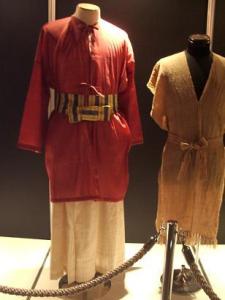
Asuka Period and Nara Period
In Asuka Period (592-710) and Nara Period (710-794), Japan adopted the political system and the culture from China. Therefore, the clothing changed to those which were very close to the country.
The most characteristic feature of women’s clothes at this time was the skirt.
The folds were attached to the hem of the skirt, and the form spread as it goes down than before.
Men generally wear hats, and in daily life, they were wearing a simple dress.
But members of the nobility and the imperial court wore the round-necked robe and the men’s skirt. The robe’s collar was based on their classes.
Related Posts
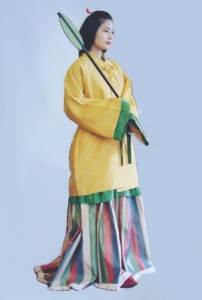
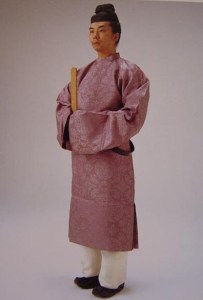
Heian Period
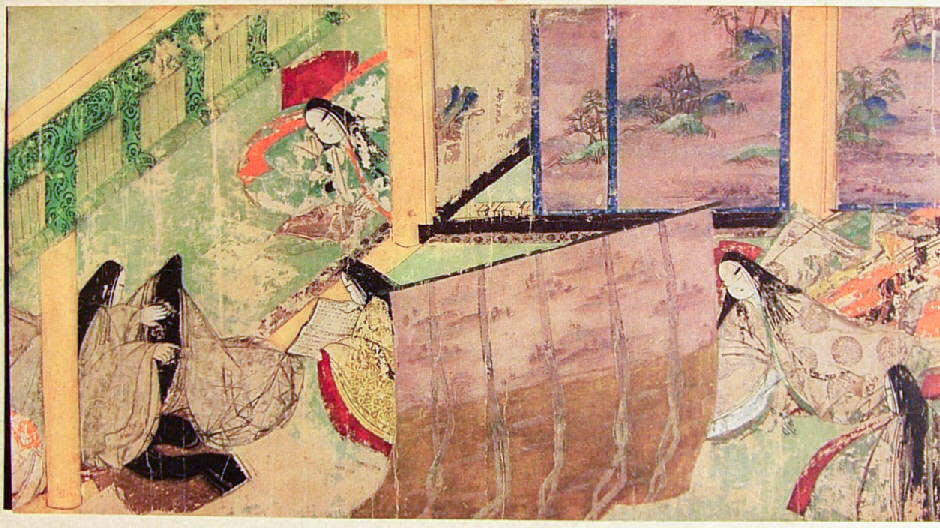
Japanese traditional kimono appeared in Heian Period (794-1185). It was because the government banned trade and diplomacy with China in this era.
It was the aristocracy who became the center of politics and culture, they liked clothes emphasized on gorgeous appearance rather than functionality.
The aristocratic women wore a coat called “oosode” (大袖, big sleeves) at the top and “kosode” (小袖, small sleeves) in layers with different colors under it. The kosode is the origin of the present kimono. The common women wore only the kosode.
Since they wore twelve kimonos, the formal dress is called “Juni-hitoe”(12 layer dress). The total weight of them was about 10kg.
The dress for male aristocrats were lighter than females and many were in moderate color.
Related Post
Kamakura Period, Muromachi Period and Azuchi-Momoyama Period
In the Heian Perid, the clothing was given the top priority to elegant appearance. However, since the warrior and their families were more active than nobles, the kimono became simpler to move easily.
Kosode, which played the role of underwear for 12 layer dress, became independent and its number gradually decreased.
And, as the layers decreased, the women had to tighten the collars firmly and they started to use “Obi”(band). Although the existence of Obi had been ambiguous in Heian Period it came out clearly to the front around 1300’s or 1400’s.
In the 1500s, the features of the present kimono were almost established, and the technique of weaving and dyeing developed greatly.
On the other side, most of the samurais wore kataginu (short sleeveless garment made of hemp) and hakama (pleated and divided skirt made in fine strips) until Edo Period.
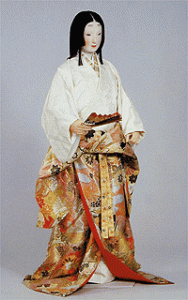
Edo Period
In the Edo period (1603-1867) when Japan had little diplomacy and exchange with other countries, the people who led the culture were town people.
They began to use a band that was wider and more having a presence than before and it became almost the same style as the current kimono.
In addition, the golden threads and the gorgeous patterns were given to the clothing.
Related Post
See Kimono in Edo Period with Kitagawa Utamaro’s ukiyo-e woodblock printings
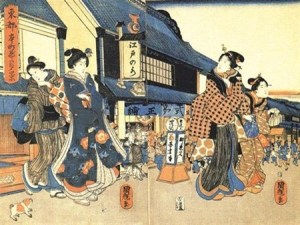
Since Meiji Period
Western culture flowed into Japan all at once after the opening to the countries in 1854, and people gradually changed their clothing to Western style from the upper class.
However, many people wore the clothes combined the characteristics of the West and Japan until the middle of Showa Period.
After World War Ⅱ, most Japanese began wearing the Western clothes in daily life, and kimonos only on the days of the event and special.
Read more…
Featured Book!
Related posts:
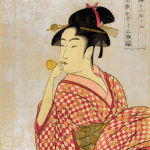 Types of traditional male and female Japanese kimono clothing
Types of traditional male and female Japanese kimono clothing
 Types of Obi belt and how to choose
Types of Obi belt and how to choose
 Traditional Samue clothing from Kiryu in Japan
Traditional Samue clothing from Kiryu in Japan
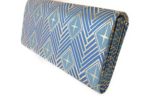 Japanese clutch and Gamaguchi bags from Nishijin Okamoto, Kyoto
Japanese clutch and Gamaguchi bags from Nishijin Okamoto, Kyoto
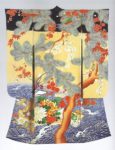 Patterns of traditional Japanese clothing (kimono)
Patterns of traditional Japanese clothing (kimono)
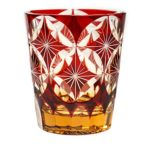 Mother’s Day special gift from traditional Japanese crafts
Mother’s Day special gift from traditional Japanese crafts
